I had the same issue with my Macbook Pro mid-2012 13-inch. The symptoms would gradually progress like this:
- after taking laptop out of my, it would be frozen (black screen, breathing light stuck to 'on')
- when picking up the laptop while open, screen would display those horizontal stripes / blocks
- shortly after that, it would progress to the three-beeps situation and not being able to find the RAM
- there were side effects, like a confused Wifi and MS Outlook crashing its identity, but those were symptoms not causes
After taking it to the repair folks, it would often work without problems again for a long time, even though they had no clue what the cause was. Strangely, taking the RAM sticks out and plugging them back in was not always effective. Or not for long. But sometimes it was.
I was so happy to read Santiagodelatorre's analysis. *That* finally made sense to me. And his solution seems to work for me too.
At the end of the RAM clips, there are little round protrusions that fit in a round opening in the side of the RAM stick. But those are not actually what holds the RAM sticks in place. You need to look even more closely for small plastic 'wings' that extend from those round protrusions.
Photos in a public Google photos album.
(Note on the photos: there are two photos that are almost similar. Except in one, the RAM stick is being held down below the plastic wing, whereas in the other, that's not quite the case. Hard to see, but very real)
Those wings (same material, same color as the rest of the clips) are meant to be flat at the bottom. So that the RAM stick rests against them: flat surface to flat surface.
As you can see in the photos, these wings have become degraded: they're not smooth like the rest of the plastic parts of the RAM clips. It almost looks like the plastic is just falling apart by itself. It doesn't look like wear and tear. Perhaps the sticks get too hot for the plastic.
In my case the protrusion on one side was no longer perfectly flat at the bottom. This was the wing for the bottom RAM stick. Since the RAM sticks are actively pushed upwards and the wing wasn't quite on top of the RAM stick, the stick would gradually push the clip aside, and thus the stick would move upward just a little.
Presumably that causes the memory problem.
This is why shocks (like the laptop receives when I put my bag down) would cause the problem to start. And why the problems gradually got worse. And why there are moments, near the end of that cycle, where the laptop will work fine while flat on a surface, but will crash as soon as I gently tilt it away from me.
I solved the problem similarly to Santiagodelatorre, except with a bigger segment of cut-up credit card, and only on one side.
War diese Antwort hilfreich?
Bewertet
Rückgängig machen
Bewertung
2
Abbrechen
Schau durch den Thread, bis du den richtigen Platz für diesen Kommentar gefunden hast. Klicke dann auf "Den Kommentar diesem Post zuordnen", um ihn zu verschieben.
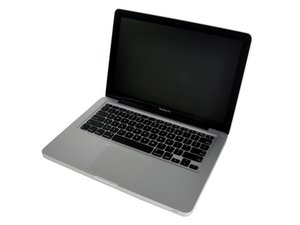
 2
2  2
2 
 971
971 
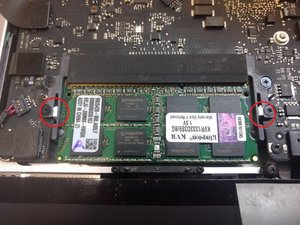


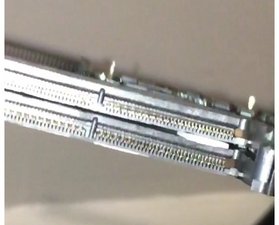
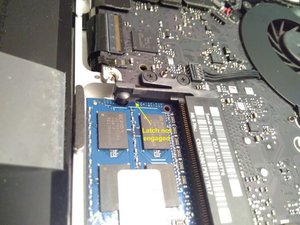

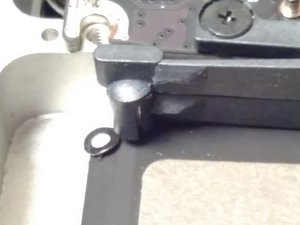


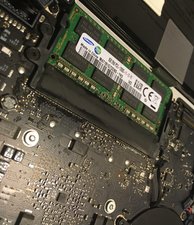







6 Kommentare
Hello,
I have the same problem. It's some kind of bad contact problem with the bottom RAM-slot and I don't know how to fix it.
@nawo13 did you find a solution on your problem?
I have a mid 2012 MacBook Pro.
Best,
Karim
von Karim Mostafa
Even I had a same issue on my mac, using a rubber spacing between 2 rams has solved my problem with my MacBook book pro mid 2012, its purely because of ram slipping out of the slot. I have noticed, this happened because my mac which was kept my backpack fell down. so high grade backpacks are recommended.
von benyamin musakh
Following Benyamins advice fixed this issue on my mid 2012 - thanks! I cut some stacks of sticky notes to match the correct height to flatten out the ram cards
von Martin Dybdahl
@Martin Dybdahl @benyamin musakh Guys, please can you send me the Video of what you want to convey. I am already facing an issue with the upper RAM Slot as well. Maybe it is related to RAM loosing out. I am using MacBook Pro Mid 2012. My email ID is ayushsomani100.as@gmail.com. Thanks in advance.
von Ayush Somani
This is an old post, but on 99% of Intel based motherboards (aka logic board), 3 beeps or 3 successive flashing lights means bad or missing memory. Regardless of the name on the computer.
von R Phuche
1 weiteren Kommentar anzeigen